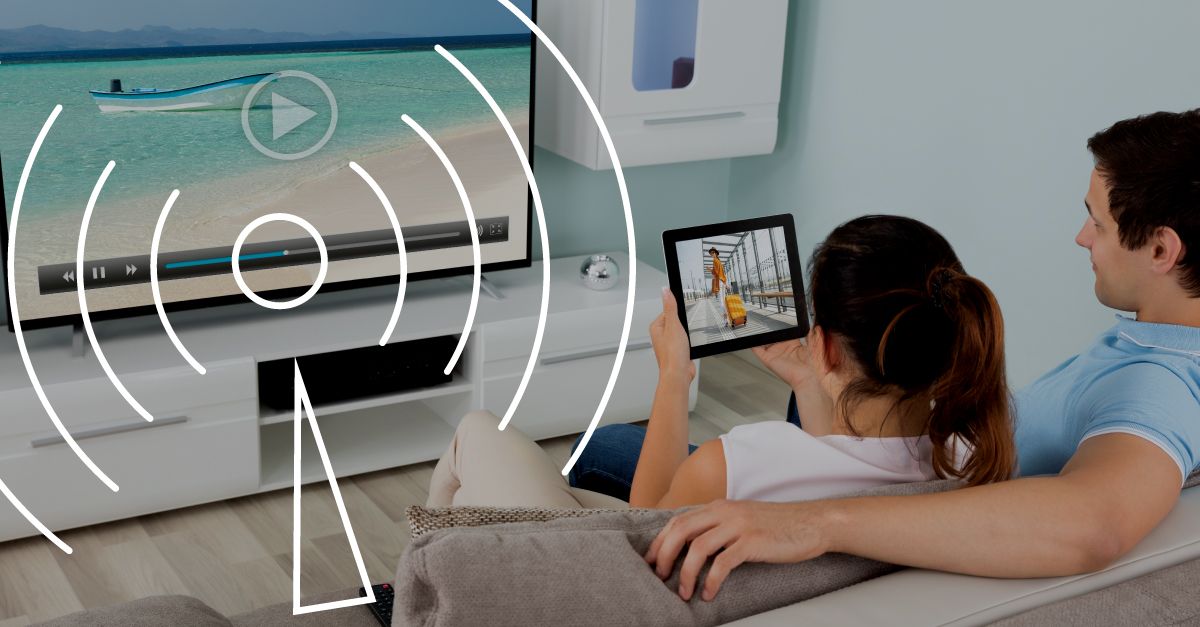
We at Genius Monkey have been riding this horse for some time, shouting “CTV is coming, CTV is coming!” For the last few years, audiences have been flocking to the cheaper versions of streaming services that include advertisements, propelling OTT/CTV to the fastest-growing programmatic medium. The best time to get a CTV strategy was 5 years ago, but the second-best time is right now. Join Genius Monkey as we dive into how to build a killer CTV campaign and jump on the wave of ad-supported streaming.
Step 1: Build a Foundation
Gather Information on Your Audience
It may seem obvious, but this is a fundamental step that requires care and revision as campaigns come and go. There are a number of techniques you can use to make sure you’re targeting the right audience.
- Start with current customers; it is generally understood that retention is cheaper than acquisition, especially if your business has some variety of loyalty program
- Using your existing customer base, create “look-alike” audiences; these are groups that demonstrate similar online behaviors without necessarily falling into similar affinity categories
- In all things, let the data be your guide; study analytics to find peak viewing times, favored content types, and platforms of choice. Following the data will sometimes lead to advertising in unexpected places; be flexible and willing to experiment


Create Metric-Based Goals
A campaign without a goal is like a ship without a rudder: you might get places, but it won’t be on purpose. Different campaigns have different objectives, and must be defined by tangible metrics you can track to know how successful the campaign is.
For example, your recent audience analytics may demonstrate that “completed views” are the leading metric that predicts conversion. Your next campaign might then focus on completed views as the principle goal, which will inform creative decisions and eventually offer valuable data on how your audience responds to campaign formats.
Here are some potential goal metrics you could track in your next campaign:
- Impressions (as part of mid- to high-funnel awareness campaigns)
- Completed views (mid-funnel, initiating interest)
- Clicks (mid- funnel, developing interest)
- Frequency / Repeat exposures (low-funnel, passively or actively gathering info)
- Time spent on landing pages (very low funnel, sealing the deal)
- Other “real intent” actions (ex: keyword searches, downloading case studies, adding items to cart, conversions)
Step 2: Select a Programmatic Marketplace
There are many places to buy CTV ad inventory, and every one comes with its own strengths and drawbacks:
Private Marketplaces
PMPs have long been the primary marketplace for CTV campaigns, often tied to broadcast-quality content. These are the more exclusive marketplaces with decent transparency, high viewability, and premium prices. While PMPs have been the CTV go-to for some time, CTV is beginning to stretch its wings to many other marketplaces as ad-supported streaming gains momentum.


The Open Market
Unmatched in potential reach and price, the Open Exchange is a great choice for small businesses, broad-reaching awareness campaigns, and retargeting efforts. This is also where the bulk of ad fraud occurs, so advertisers should approach with caution (and preferably a platform with solid verification services).
Direct Buy/Programmatic Guaranteed
While PMPs still operate on a real-time bidding system, Programmatic Guaranteed involves fixed prices and guaranteed delivery on impressions. PG works very similar to direct handshake deals, but the negotiations are handled automatically through programmatic buying services.
Walled Gardens
As retailers and other big-name companies grow in power, they can leverage their extensive customer data to offer their own kind of PMP within a closed ecosystem. Walled Gardens excel in using primarily first-party data for accurate audience targeting, but the closed ecosystem complicated their implementation in more wide-reaching programmatic efforts.
Most advertisers will use a mix of all these marketplaces depending on the nature and needs of the business and campaign. Genius Monkey, for example, places ads wherever our users target audience will be, which requires working with any and all legitimate marketplaces. GM users can work with their platform representative to understand which buying strategies will best suit their goals.


Step 3: Optimize the Customer Experience
Frequency Capping
Many people may dislike receiving ads, but nobody enjoys seeing the same message over and over again. Frequency capping allows advertisers to limit the number of times the same ad is served to the same viewer. Modern CTV bidding tools allow capping at multiple levels, i.e. household capping and user capping per-campaign.
A part of frequency capping involves user-level pacing, sometimes referred to as a “suppression window.” This simply refers to the strategy of holding off placing ads in a certain location or for a certain user for a duration. Relatedly, ad rotation is switching up the version of a message that a user sees, lowering the chance of fatigue or a negative impression.
Make it Easy to Find You
While CTV can do a lot all on its own, it – like all digital channels – works best when used as a part of a larger, multimedia campaign for maximum exposure. A customer might be intrigued with an initial CTV ad, but likely won’t take action until later.
This is where a social media presence can also pay off; it can be very time- and resource-intensive to actively keep up with trendy content, but a large portion of the population will search for business on social media. Specific stats vary by study, but they collectively suggest that 50%+ of Gen Z and around half of Millennials discover and research products through TikTok, Instagram, and YouTube.


The Often-Ignored Step 4: Keep the Engine Running
Programmatic is a powerful tool, but it is NOT a fire-and-forget silver bullet. Each campaign must be carefully monitored to make sure everything is working as intended and making adjustments along the way. In-progress campaign optimization offers massive savings and can potentially save a failing campaign, yet it is a step that is often ignored by advertisers.
We don’t blame them; digital advertisers have a huge and complicated job with more and more demands of them each year. With management breathing down their necks constantly pushing for better ROI, it’s no wonder that an advertiser would opt to fully automate their programmatic efforts rather than take a hands-on approach.
That is where fully-managed platforms come into play. Genius Monkey, for example, is a specialty programmatic platform that doesn’t just place ads and hope for the best; rather, our team of experts has eyes and hands on every single campaign our users want to run. Our experience can mold your campaign into the best-optimized version of itself, stretching your ad budget further than ever before.
Step 5: Apply The Lessons and Keep Going!
All of your campaigns will provide valuable data on what works, what doesn’t work, and – if your programmatic platform is up to snuff – what you can do to make it even better. Never lose an opportunity to experiment, learn, and apply those findings to your next campaign.
Whether you’re a CTV vet or just barely dipping your toes into programmatic, Genius Monkey is your one-stop-shop for answered questions and efficient conversions. If you’re ready to evolve your digital advertising strategy to the next level, get in touch with Genius Monkey today!




